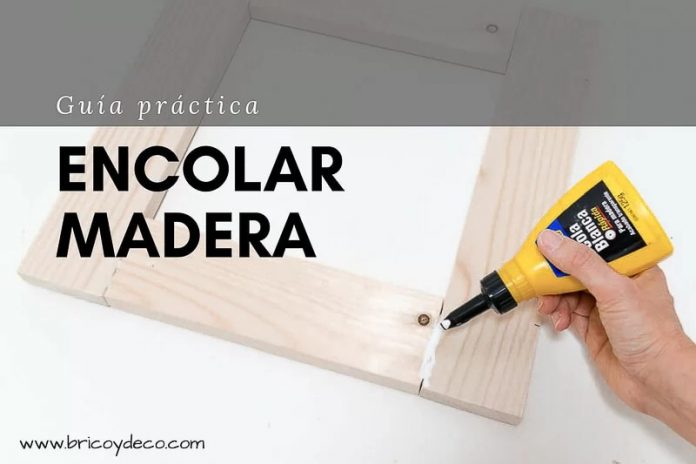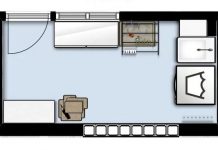
Carpenter’s glue or wood glue is the one usually used to assemble and join pieces of this material. If you want to know this type of adhesive in depth and achieve better results when assembling and repairing parts, don’t miss this practical guide on wood glue.
Wood glue is a water-based adhesive containing polyvinyl acetate. Its good adherence on wood classifies it as best glue for wood. For this reason, it is the one that is usually used to join and assemble parts. In addition, another of its advantages is that it is easy to sand once it has dried.
How to glue wood
Although its use is very simple, there are a series of steps and recommendations that you must follow.
1º.- Protect the area
First of all, you must cover the work area before starting. It may seem silly, but it won’t seem so when you can’t get the piece off the workbench. Use protective paper or even masking tape at the bottom of the area to be adhered.
If the paper dries on the adhesive, you will be able to remove it with a cutter or by sanding the area.

2º.- Everything by hand
Have the clamps, clamps or adhesive tape at hand since, one of the key points to achieve a good fixation, is that you have to exert pressure on the pieces to be joined.

In addition, since the glue can cause the wood to swell, if the reinforcement systems are placed immediately after applying it, we can avoid it. This advice is very important when making joints between joints, since they are more prone to swelling.
3º.- Apply the carpenter’s glue
Apply a bead of wood glue along one of the pieces. Next, place the other piece on top and move it slightly to spread the adhesive evenly and make it penetrate both.

On the other hand, when gluing it is important to know that the main factors that favor a good joint are:
- Surface or extension of the area to join
- Wood grain direction
It is called wood grain to the size of the longitudinal fibers that make up the wood. According to this size, the woods will be classified as fine, medium or coarse grain.
On the other hand, each type of wood has a different grain structure, but they all have a direction that can be diagonal, crooked, straight, wavy, irregular or crossed.
It should be noted that a joint along the grain direction will be stronger than one that is against the grain (for example, the corners of a picture or picture frame). For this reason, it is always convenient to finish off this type of fastening with nails or nails.

How to remove glue residue from wood
Too much glue that has dried can spoil the look of a finished piece, as it can discolor the wood and affect the finish, whether it’s stain or paint.
The best solution is to pass a cloth or cloth moistened with water over the excess glue, before it dries. But if it has already adhered to the wood, it will have to be removed with a sander or chisel. A solvent can also be used, but care must be taken not to saturate the untreated wood so that it does not warp.

Tips and tricks when applying wood glue
- Wood glues have a drying time of approximately one hour, although their maximum anchorage is reached after 24 hours. Keep this in mind when joining the pieces and do not remove the anchors prematurely if you want a long-lasting and firm fixation.
- Not all carpenter’s glues are water resistant and therefore suitable for use on outdoor furniture. There are other adhesive options that contain cyanoacrylate or polyurethane that are more suitable for these cases.
- The glues that have a slower drying time are the most suitable for fixing curved or rounded pieces.
- More glue does not mean better adhesion. Wood, being a porous material, easily absorbs moisture. For this reason, the application of an excess of glue can cause it to swell and the pieces will not line up correctly.

I hope this practical guide on wood glue has helped you improve the joints when assembling and assembling wooden pieces. You can find more ideas, practical guides and inspiration for your DIY projects at



